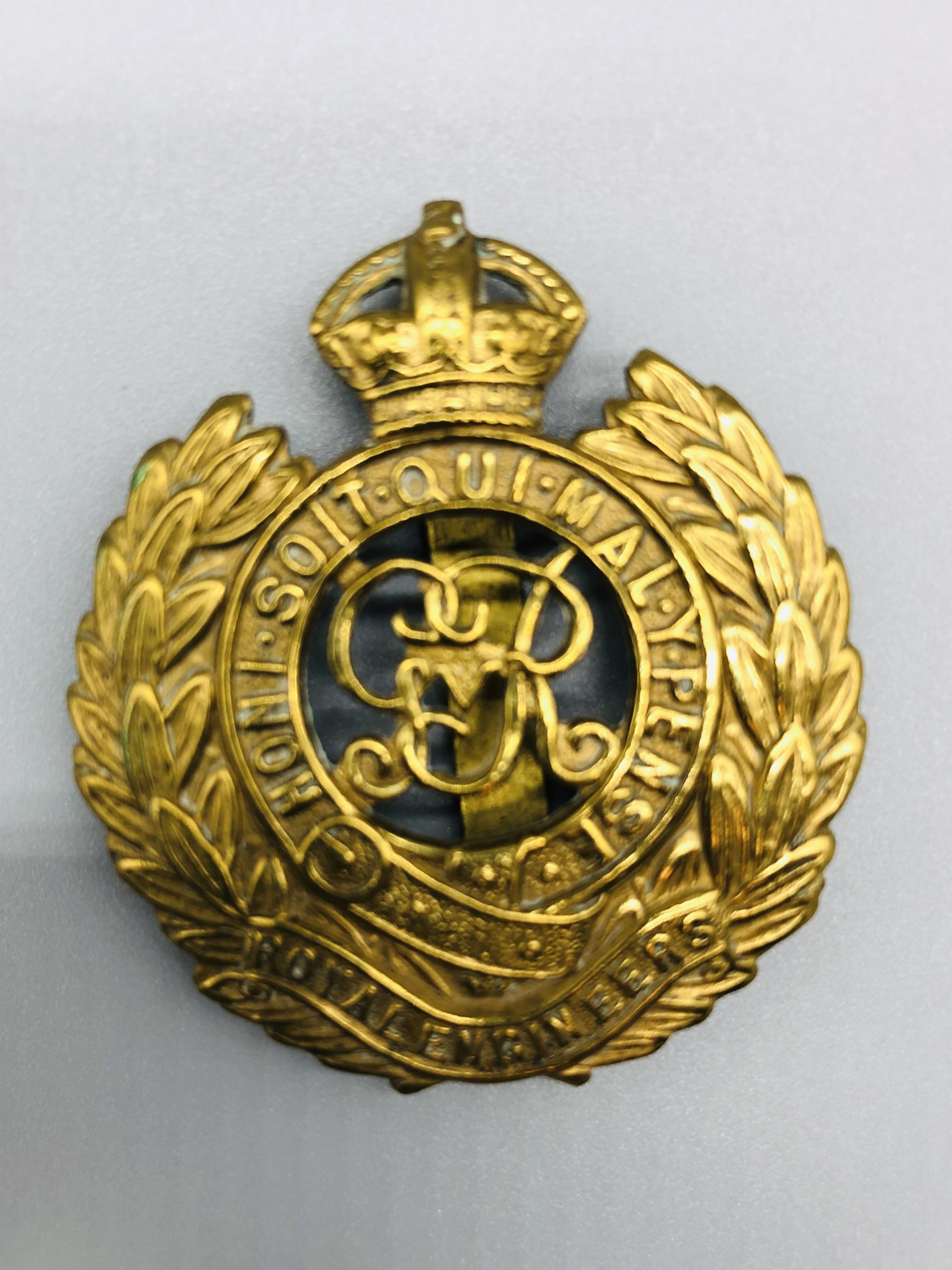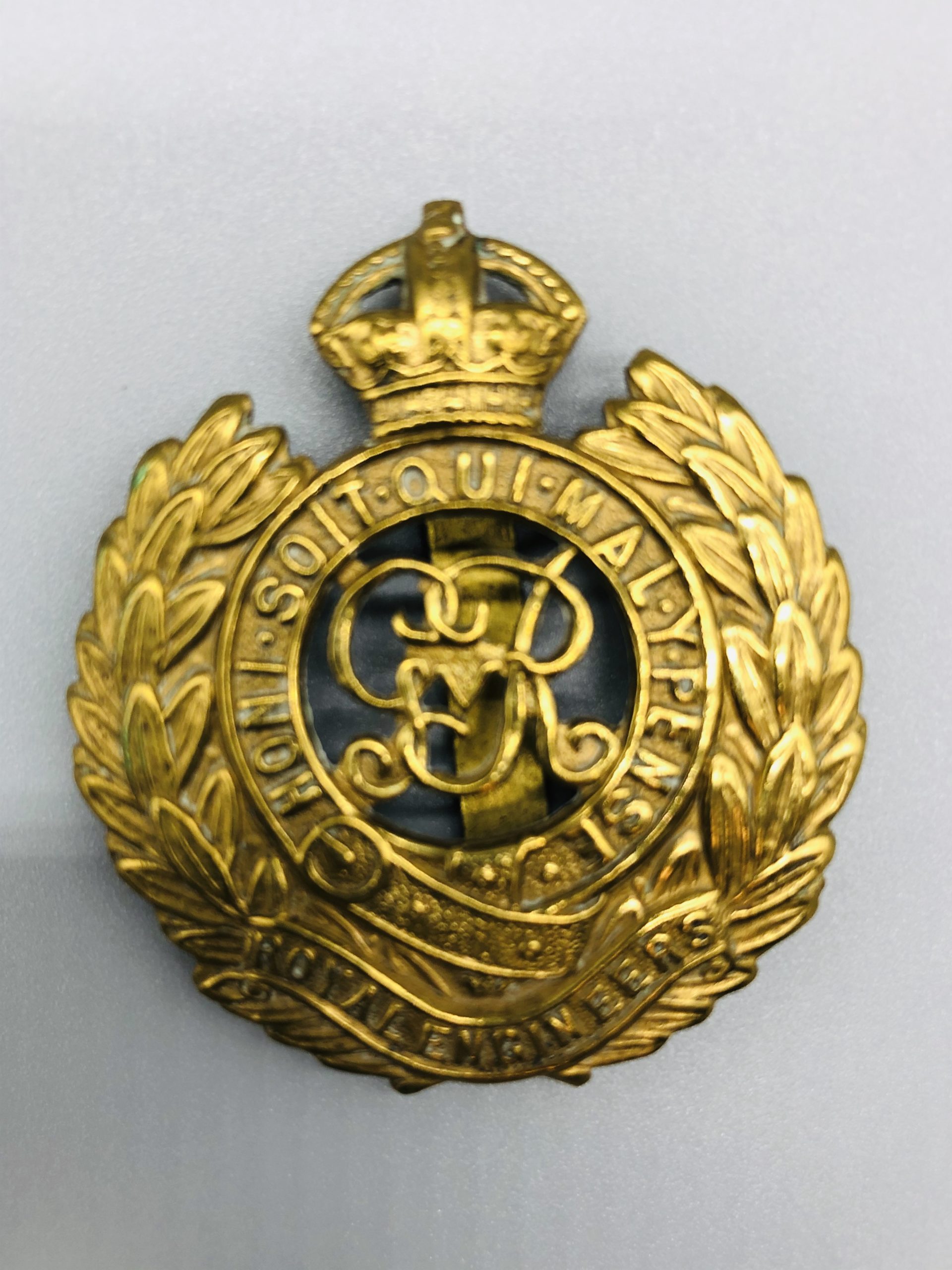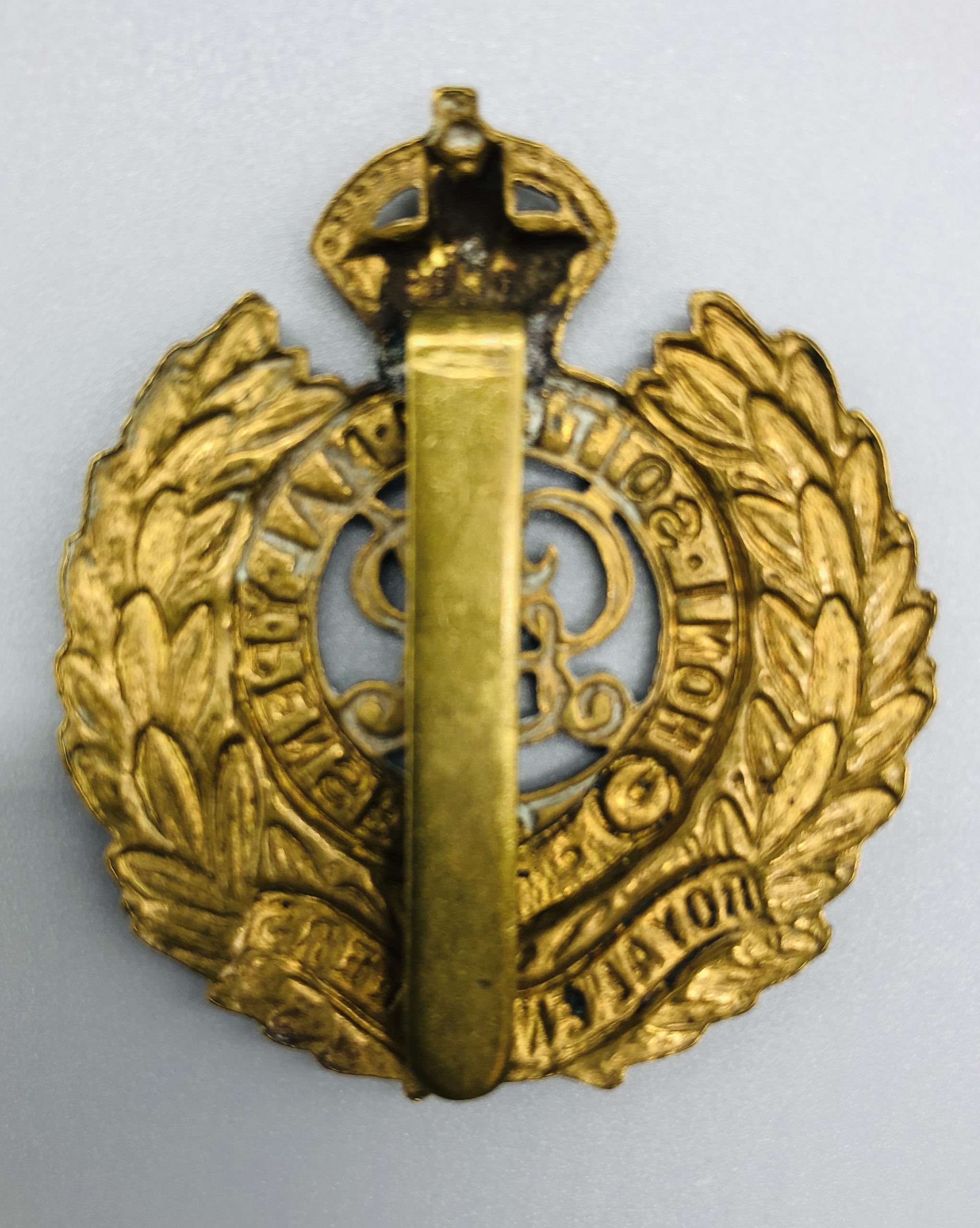Description
Royal Engineers Cap Badge (George V)
The regimental cap badge of the Royal Engineers, the badge depicts the royal monogram in the centre GRV within a crowned garter surrounded by a laurel wreath and surmounted by imperial Kings crown.
Below the wreath and garter is a scroll inscribed “Royal Engineers’.
Brief History
The RE’s has been involved in every major conflict the British Army has fought and has ever since lived up to its Motto “Ubique” (“Everywhere”).
The Corps of Royal Engineers has a long heritage that not many corps can rival. They were the direct descent from William the Conqueror’s Military Engineers who were directed in 1066 by Humphrey de Tilleaul.
By the end of the Peninsular War in 1814 there were five companies serving with Wellington’s Army.
In 1856, the Corps of Royal Sappers and Miners were amalgamated with the Corps of Royal Engineers. The rank of ‘Private’ in the newly formed Corps of Royal Engineers was changed to ‘Sapper’ and still exists today.
The Royal Engineers’ interest in aeronautics began in the 1860’s when they explored the possibilities of using air balloons for aerial observation purposes. This interest developed into an interest in fixed winged aircraft. In 1911 the Corps formed its Air Battalion, the first flying unit of the British Armed Forces. The Air Battalion was the forerunner of the Royal Flying Corps and Royal Air Force.
WW1, Royal Engineer tunnelling companies, nicknamed “the Moles”, were specialist units of the Corps of Royal Engineers within the British Army, formed to dig attacking tunnels under enemy lines during the First World War. They designed and built the frontline fortifications, creating cover for the infantry and positions for the artillery. It was in the hands of the technically skilled RE’s to develop responses to chemical and underground warfare.
The RE’s maintained the railways, roads, water supply, bridges and transport – allowing supplies to the armies. They operated the railways and inland waterways, maintained wireless, telephones and other signalling equipment, making sure communications existed. The Royal Engineers grew into a large and complex organisation, by the 1 August 1914, the RE consisted of 1056 officers and 10394 men of the regular army and Special Reserve, plus another 513 and 13127 respectively serving with the RE of the Territorial Force. The officers and men manned 26 coastal defence Fortress Companies (of which 15 were overseas), 7 Signal Companies, 2 Cable and Airline (signalling) Companies, 15 Field Companies, 3 Survey Companies, 2 Railway Companies, and miscellaneous other units. There were also 9 Depot companies carrying out training and administrative duties, as well as various Schools.
In 1915, in response to German mining of British trenches under the then static siege conditions of World War One, the corps formed its own tunnelling companies. Manned by experienced coal miners from across the country, they operated with great success until 1917, when after the fixed positions broke, they built deep dugouts such as the Vampire dugout to protect troops from heavy shelling. By 1 August 1917, it had grown to a total of 295668. It was twelve times bigger than the peacetime establishment.
Before the Second World War, Royal Engineers recruits were required to be at least 5 feet 4 inches tall (5 feet 2 inches for the Mounted Branch). They initially enlisted for six years with the colours and a further six years with the reserve or four years and eight years. Unlike most corps and regiments, in which the upper age limit was 25, men could enlist in the Royal Engineers up to 30 years of age. They trained at the Royal Engineers Depot in Chatham or the RE Mounted Depot at Aldershot
WW2, RE’s as they did in WW1, maintained the railways, roads, water supply, bridges and transport etc’. From 1940 disposed of bombs. Maybe the most, greatest achievements of the RE’s were the construction and operation of the Mulberry Harbour its support for the Battle of Normandy.




